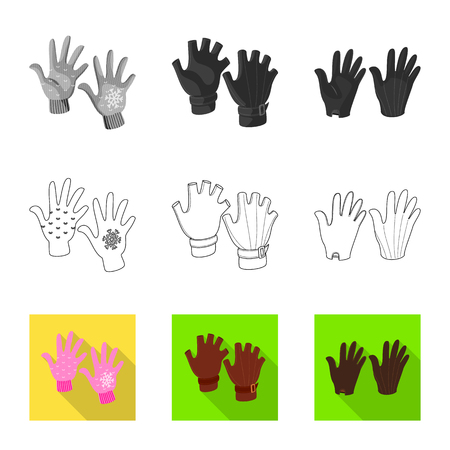Introduction: Palmistry’s Place in Modern British Wellness
Palmistry, known to many as chiromancy, has woven its subtle influence through the tapestry of British history for centuries. Once a favoured parlour pastime among Victorian society and earlier, its presence can be traced in British folklore, literature, and even among the learned circles of the past. Today, as modern Britain experiences a renaissance in holistic well-being, palmistry is finding renewed relevance and respect within the nation’s dynamic wellness culture. In an era defined by mindfulness, self-discovery, and integrative health practices, more Britons are turning to traditional wisdom to complement contemporary approaches to well-being. The study of finger shapes, in particular, offers a unique lens through which individuals can explore their personality traits, emotional tendencies, and potential life paths—bridging the ancient with the modern. Thus, palmistry stands not merely as a relic of curiosity but as a living tradition that resonates deeply with today’s quest for balance, self-understanding, and holistic harmony.
Understanding Finger Shapes in Palmistry
In the realm of palmistry, finger shapes serve as essential indicators of personality and innate tendencies. As British wellness movements increasingly embrace holistic approaches, understanding these classic interpretations helps integrate traditional wisdom with contemporary well-being practices. Whether you are new to palmistry or seeking to enhance your self-awareness, recognising the characteristics associated with different finger shapes offers a fascinating window into both self-reflection and mindful living.
The Four Primary Finger Types
Palmists typically categorise fingers into four primary shapes, each corresponding to an element. These associations provide a foundation for interpreting character traits, which can be especially meaningful within modern British wellness contexts that value self-understanding and personal growth.
| Finger Shape | Element | Classic Interpretation | Modern Wellness Insight |
|---|---|---|---|
| Square | Earth | Practicality, reliability, focus on detail | Grounded approach to routines; values structure and stability in daily life |
| Conic (Tapered) | Air | Sensitivity, adaptability, creativity | Open-mindedness; seeks variety and is receptive to new wellness practices |
| Spatulate | Fire | Energy, initiative, love of action | Active participation in physical activities; motivated by challenges and progress |
| Knotty (Knotted Joints) | Water | Analytical mind, introspection, methodical nature | Meditative pursuits; enjoys reflection and thoughtful exploration of well-being techniques |
Accessible Guidance for Beginners
If you are just beginning your journey into palmistry within a modern British context, it may be helpful to observe your own hands under natural light. Note the overall shape of your fingers—are they straight or curved? Do they taper at the tip or remain broad? Such observations can serve as entry points for exploring how ancient interpretations might inform your present-day wellness choices.
A Blending of Old and New Wisdoms
The beauty of integrating palmistry with contemporary wellness lies in its accessibility. By appreciating the traditional meanings attached to finger shapes, individuals can foster greater self-awareness and make more conscious lifestyle decisions—a core value echoed throughout Britains thriving wellness community.

3. Intersecting Wellness Trends: Mindfulness, Holistic Health, and Palmistry
In recent years, Britain has witnessed a profound renaissance in holistic wellness practices, with mindfulness and lifestyle medicine becoming increasingly embedded in daily life. The British public, renowned for its thoughtful approach to tradition and innovation alike, has embraced these movements as pathways to greater self-awareness and equilibrium. At the heart of this evolution lies a renewed appreciation for ancient wisdom—among them, palmistry—which now finds a harmonious place within contemporary wellness philosophies.
Mindfulness, with its roots in contemplative traditions, encourages individuals to cultivate present-moment awareness and emotional balance. Similarly, lifestyle medicine advocates for proactive choices that nurture both body and mind, fostering long-term health through nutrition, movement, and stress management. Both approaches champion the importance of self-knowledge—a principle deeply embedded in British values of reflection and personal responsibility.
Palmistry, though often viewed through the lens of mysticism, aligns remarkably well with these core tenets. The study of finger shapes and lines on the hand offers insights into temperament, strengths, and innate tendencies. This practice invites individuals to embark on an introspective journey, much like mindfulness meditation or holistic health consultations. By observing one’s own hands with curiosity rather than superstition, Britons can explore aspects of their character and life path in a manner consistent with modern wellness ideals.
The British wellness landscape now sees palmistry not as mere fortune-telling but as a tool for self-discovery—one that complements existing modalities. As people seek more integrated approaches to wellbeing, the convergence of palmistry with mindfulness and holistic health is both timely and culturally resonant. Together, these disciplines encourage a balanced perspective: honouring tradition while embracing evidence-based practices that support lifelong growth.
4. Applying Finger Shape Insights for Personal Growth
The integration of palmistry, particularly the study of finger shapes, with modern British wellness movements offers a unique opportunity for self-reflection and personal development. In the UK, established wellness routines such as mindfulness meditation, journaling, and yoga are embraced across communities seeking holistic health. By understanding the symbolic meanings behind various finger shapes, individuals can tailor their personal growth strategies to complement these popular practices, fostering both self-awareness and well-being.
Understanding Your Finger Shapes
Begin by observing the primary characteristics of your fingers: length, thickness, flexibility, and tip shape. Each trait reflects tendencies in personality or behaviour. For example, long fingers are often associated with analytical thinking and attention to detail, while square tips may indicate practicality and reliability. Take a moment to compare your observations with traditional interpretations to identify areas for potential growth.
| Finger Shape | Traditional Meaning | Wellness Practice | Personal Development Focus |
|---|---|---|---|
| Long & Slender | Analytical, thoughtful | Mindfulness Meditation | Patience and Observation Skills |
| Short & Thick | Practical, action-oriented | Physical Activity (Yoga/Pilates) | Discipline and Mind-Body Awareness |
| Tapered Tips | Sensitive, creative | Creative Journaling | Self-Expression and Emotional Awareness |
| Square Tips | Orderly, reliable | Structured Routines (Daily Planning) | Consistency and Goal Setting |
Integrating Finger Shape Insights into Daily Practices
Journaling: Reflect on how your finger shapes align with your responses to daily challenges or interactions. For instance, if you have tapered tips but struggle to express emotions, journaling can become a safe space for creative exploration.
Mindfulness Meditation: Use insights from your hand analysis as focal points during meditation sessions. If your fingers suggest a tendency toward restlessness (short fingers), focus meditations on grounding techniques.
Routine Building: Align structured wellness routines—such as meal planning or regular exercise schedules—with attributes indicated by square-tipped fingers to reinforce reliability and organisation.
Nurturing Growth Through Community Wellness Activities
The British tradition of group wellness activities—such as local yoga classes or guided nature walks—can be enhanced by sharing finger shape insights within these circles. Discussing palmistry findings can foster supportive dialogue about personal strengths and challenges, encouraging communal growth alongside individual progress.
Cultivating Mindful Awareness in Everyday Life
The continuous practice of integrating finger shape knowledge with daily habits not only deepens self-understanding but also promotes mindful living—a cornerstone of contemporary British wellness culture. This blend of ancient wisdom and modern routine serves as a foundation for lasting personal transformation.
5. Case Studies: Contemporary Uses of Palmistry in British Well-being Spaces
Across the United Kingdom, the resurgence of interest in holistic wellness has seen palmistry—specifically, the analysis of finger shapes—find a new home within modern well-being practices. Below, we present brief yet evocative examples illustrating how British wellness coaches, therapists, and holistic practitioners thoughtfully weave this ancient art into their contemporary services, offering clients deeper self-awareness and bespoke guidance.
Personal Coaching: Fostering Self-Understanding
In bustling cities such as London and Manchester, personal development coaches often use finger shape analysis during initial consultations. For instance, a coach may observe a client’s long, slender fingers—a classical indicator of analytical thinking—and tailor mindfulness exercises that encourage emotional expression to balance this intellectual tendency. By referencing finger shapes, coaches can suggest uniquely British well-being strategies, such as guided walks in local parks or journaling amidst nature, blending tradition with modern practice.
Therapeutic Settings: Enhancing Emotional Resilience
Counsellors and psychotherapists working in community health centres or private clinics sometimes integrate palmistry as an icebreaker or reflective tool. For example, a therapist in Edinburgh might notice square-tipped fingers on a client, symbolising practicality and reliability. They may gently encourage the client to explore creative outlets—like pottery or watercolour painting—popular in British therapeutic settings, to nurture flexibility and spontaneity alongside their grounded nature.
Holistic Health Retreats: Promoting Mind-Body Harmony
At wellness retreats nestled in the Lake District or along Cornwall’s coast, holistic practitioners frequently offer group sessions where guests learn about finger types—earthy, airy, fiery, and watery—and their links to temperament. A practitioner might demonstrate how participants with short, thick fingers (often associated with earthiness) can benefit from grounding yoga postures inspired by British woodland landscapes. This approach creates meaningful connections between ancient palmistry wisdom and the natural beauty of the UK’s countryside.
Workplace Well-being Initiatives
Forward-thinking HR managers and corporate wellness facilitators have also begun using basic finger analysis during team-building workshops. For example, recognising varied finger shapes among staff can help highlight different communication styles or problem-solving approaches within a team. This subtle nod to palmistry fosters inclusivity and mutual respect—a hallmark of contemporary British workplace culture.
The Gentle Art of Guidance
Through these case studies, it becomes clear that modern British practitioners treat palmistry not as fortune-telling but as a gentle art of personal insight. The respectful integration of finger shape analysis into coaching, therapy, holistic health sessions, and even corporate spaces underscores a broader movement: reviving time-honoured traditions to cultivate well-being tailored for today’s diverse society. In every instance, this blend of old and new is carried out with warmth and sensitivity—qualities intrinsic to both British culture and the enduring spirit of palmistry.
6. Ethical and Cultural Considerations
As palmistry finds its place within the landscape of modern British wellness, it is essential to approach this integration with both ethical mindfulness and cultural sensitivity. The United Kingdom is renowned for its pragmatic, secular outlook and a deep respect for evidence-based approaches to health and wellbeing. In such a context, ancient practices like palmistry—rooted in tradition and symbolism—must be presented thoughtfully, avoiding any hint of superstition or unsubstantiated claims.
Respecting Diversity and Belief Systems
Modern Britain is a tapestry of varied beliefs, backgrounds, and values. Practitioners who wish to incorporate palmistry into wellness settings must remain attentive to the diverse perspectives of their audience. It is crucial not to impose interpretations or predictions but rather to offer insights as one of many tools for self-reflection, emphasising personal empowerment over fate or determinism.
Transparency in Practice
Ethical palmistry practice demands transparency regarding the symbolic nature of readings. When integrating finger shape analysis into wellness routines, practitioners should clarify that such methods are complementary and intended to inspire reflection on personality traits, stress responses, or personal growth—never as substitutes for medical or psychological advice.
Avoiding Appropriation and Stereotyping
The history of palmistry spans continents and centuries, often entwined with specific cultural traditions. In the British context, it is respectful to acknowledge these roots without appropriating or misrepresenting them. Avoiding stereotypes—such as linking certain finger shapes with fixed destinies—is vital to maintaining dignity and openness in practice.
Ultimately, the responsible blending of palmistry with British wellness movements rests on informed consent, clear communication, and a spirit of curiosity rather than dogma. By grounding practice in respect for both individual autonomy and cultural diversity, practitioners can ensure that this ancient art enriches the modern pursuit of wellbeing without compromising integrity or inclusivity.
7. Conclusion: Charting the Path Forward
As we stand at the crossroads of tradition and innovation, the integration of palmistry with modern British wellness movements presents a unique opportunity for personal and communal enrichment. Palmistry, with its centuries-old wisdom encoded in the language of finger shapes and hand lines, offers a reflective tool for self-awareness—a concept that resonates deeply with contemporary wellness philosophies championed across the United Kingdom.
By thoughtfully combining these two traditions, we can create a holistic approach to wellbeing that honours both introspective heritage and scientific advancement. Palmistry encourages individuals to look inward, fostering mindfulness and self-acceptance—qualities that underpin many popular British wellness initiatives. Conversely, the structured frameworks and evidence-based practices found in modern wellness movements offer palmistry new avenues for validation, accessibility, and relevance in today’s society.
The synthesis of palmistry’s symbolic insights with practices such as mindfulness meditation, nutrition awareness, and community support creates a richer tapestry of wellbeing. This union not only bridges generational gaps but also nurtures a sense of belonging, curiosity, and empowerment among practitioners from diverse backgrounds.
Moving forward, collaboration between palmists and wellness professionals could lead to innovative workshops, publications, or digital resources tailored to British audiences. Such initiatives would enable individuals to explore their unique qualities through both ancient symbolism and modern science—inviting a balanced path to self-discovery that is culturally resonant and personally meaningful.
Ultimately, when approached with sensitivity and open-mindedness, the marriage of palmistry and modern British wellness has the potential to deepen our understanding of ourselves and each other. It invites us all to chart a path forward—one where tradition informs progress, and every individual is empowered to flourish in body, mind, and spirit.


